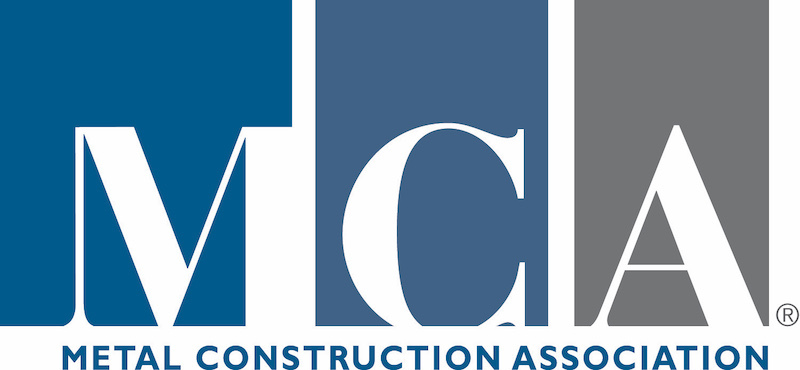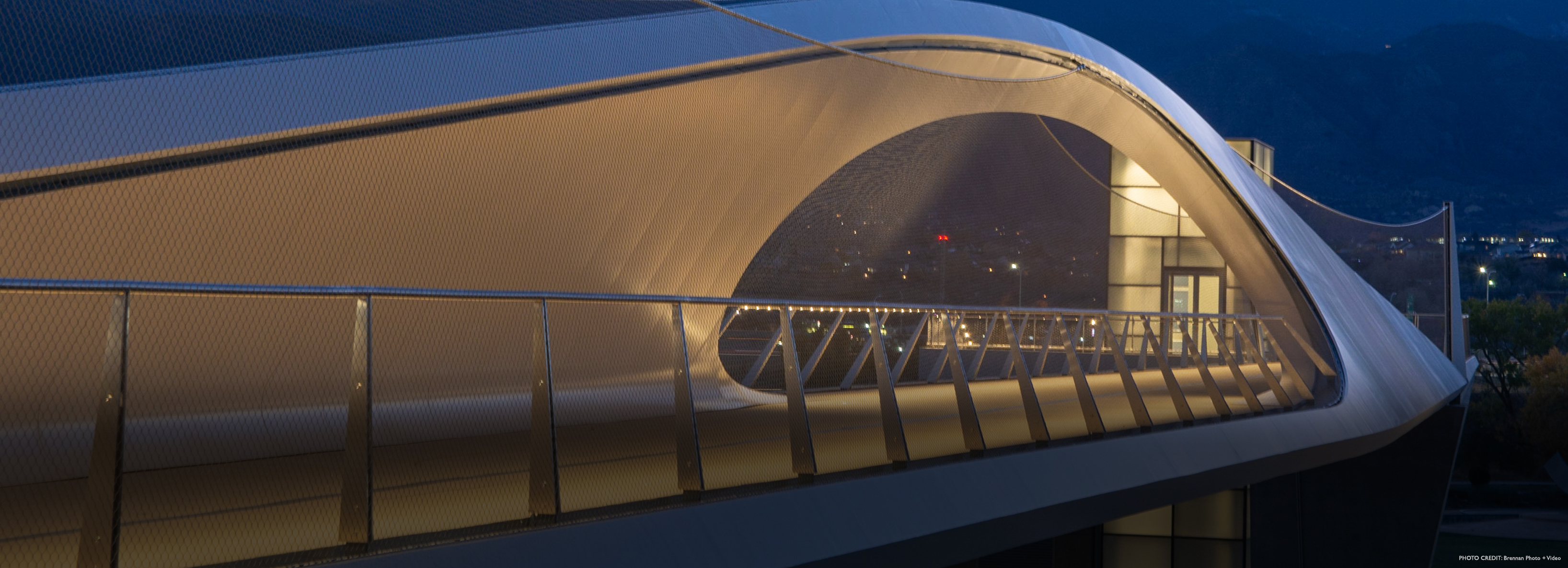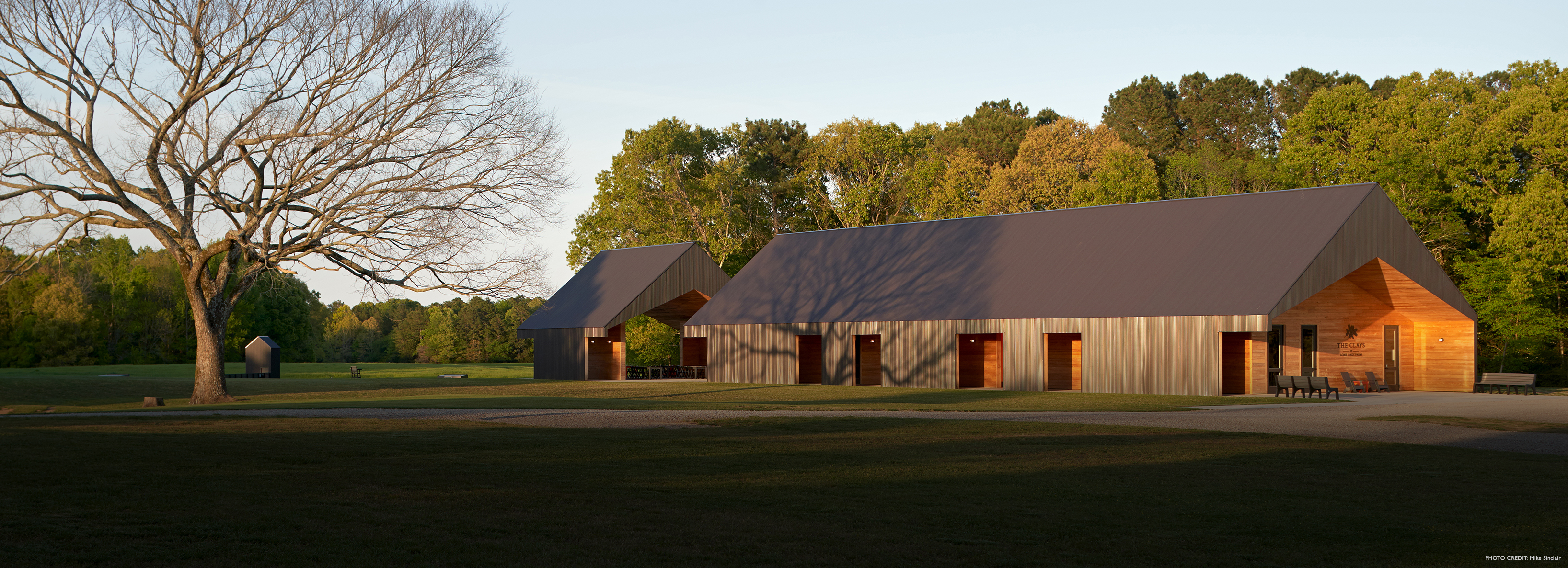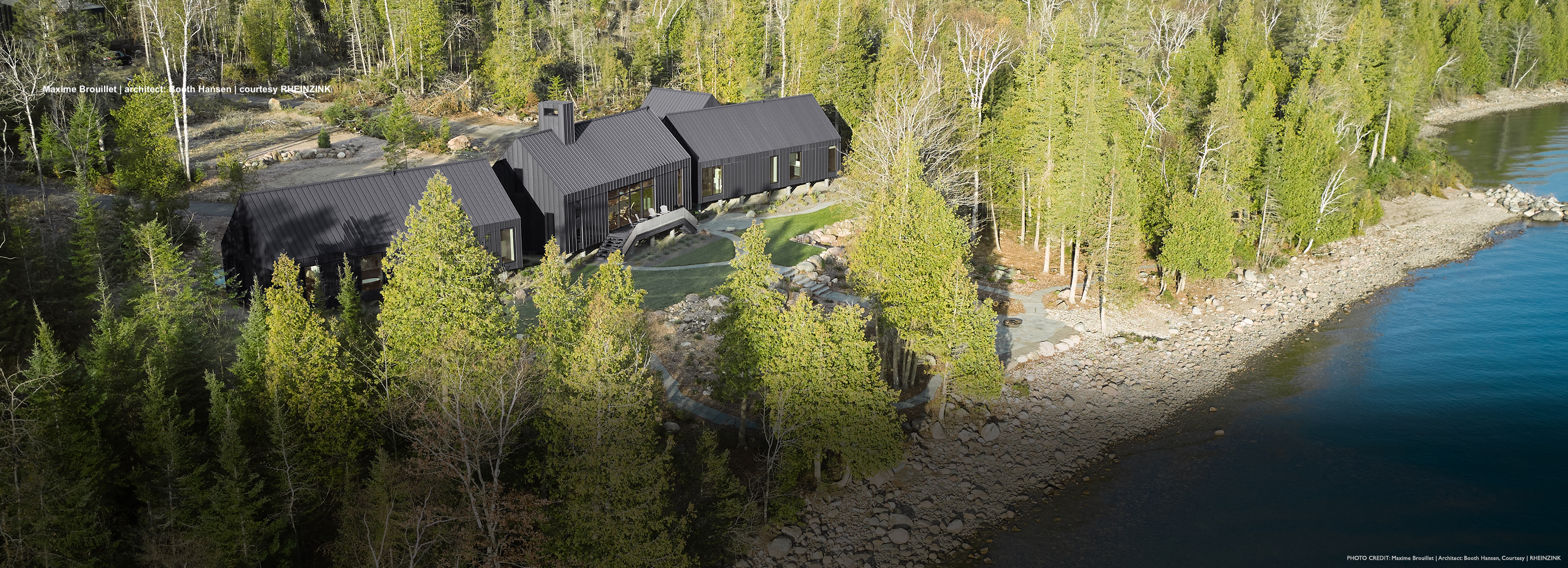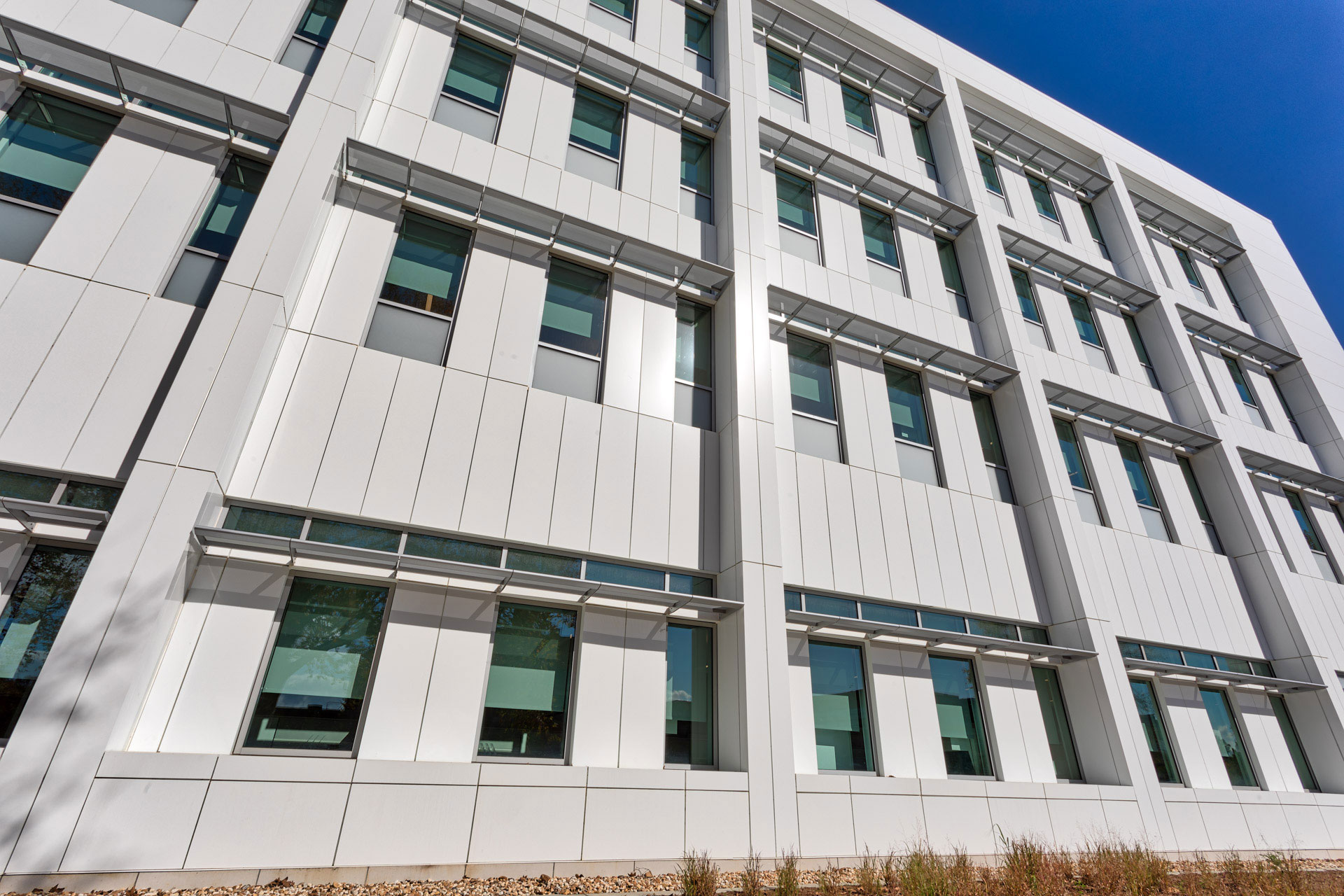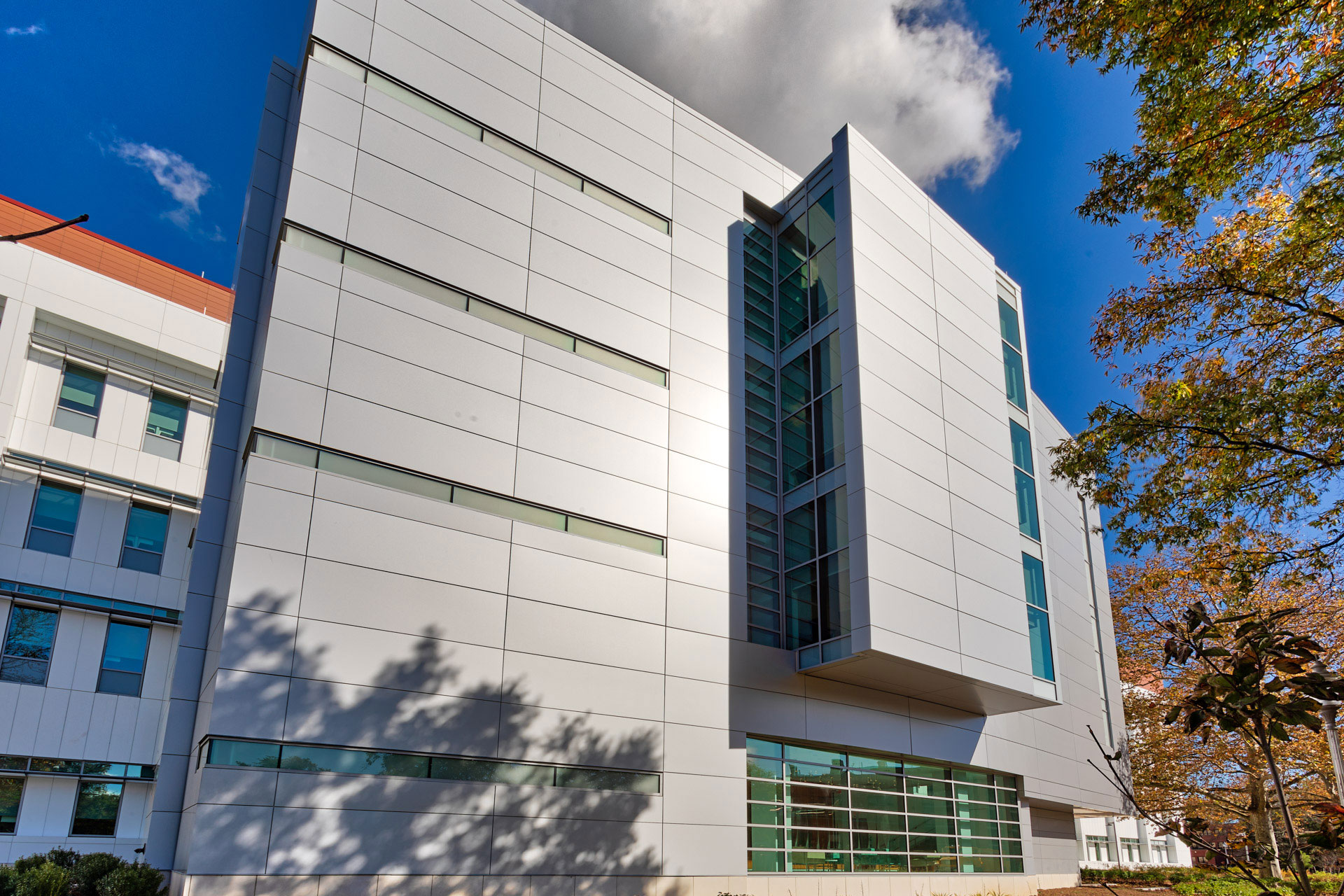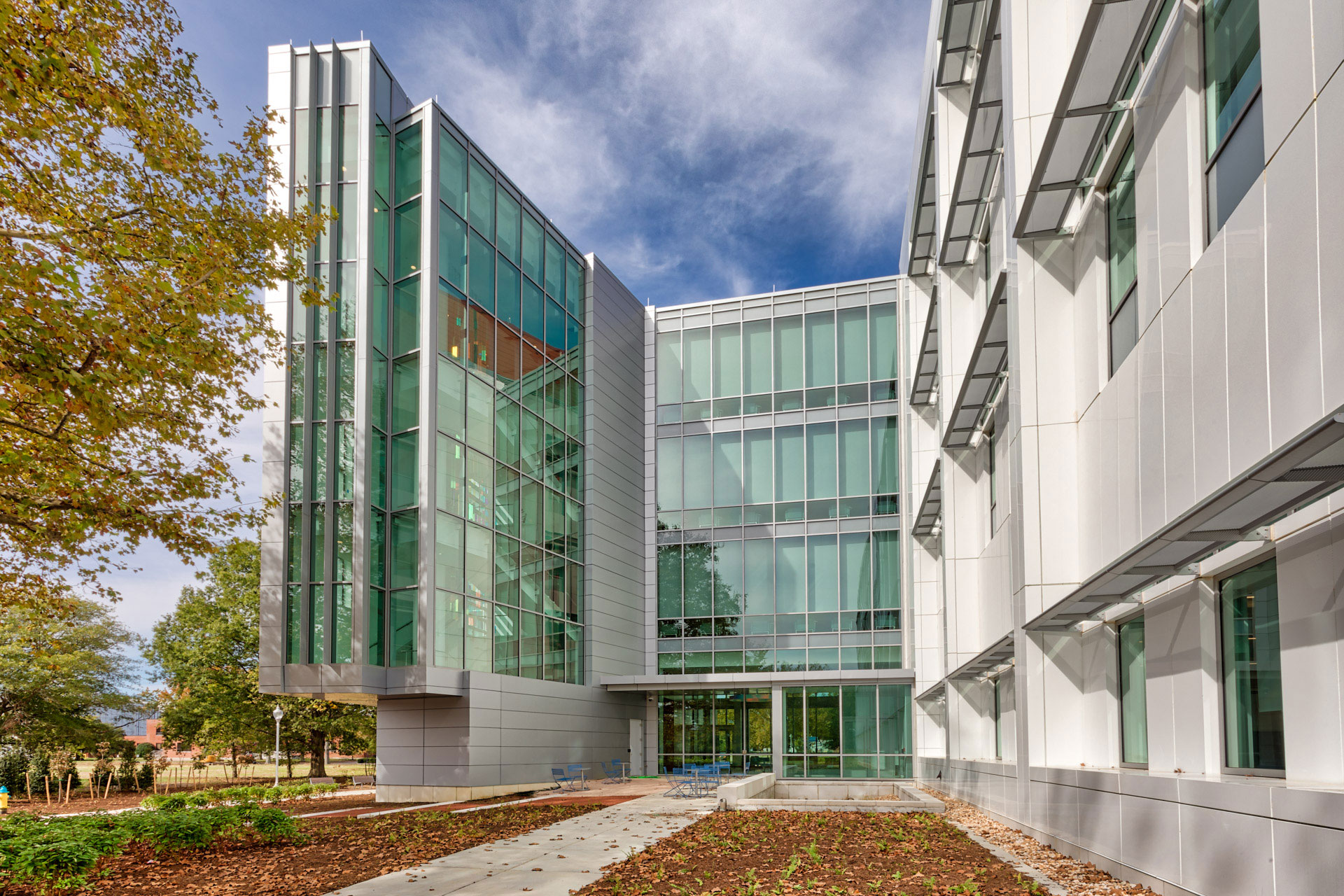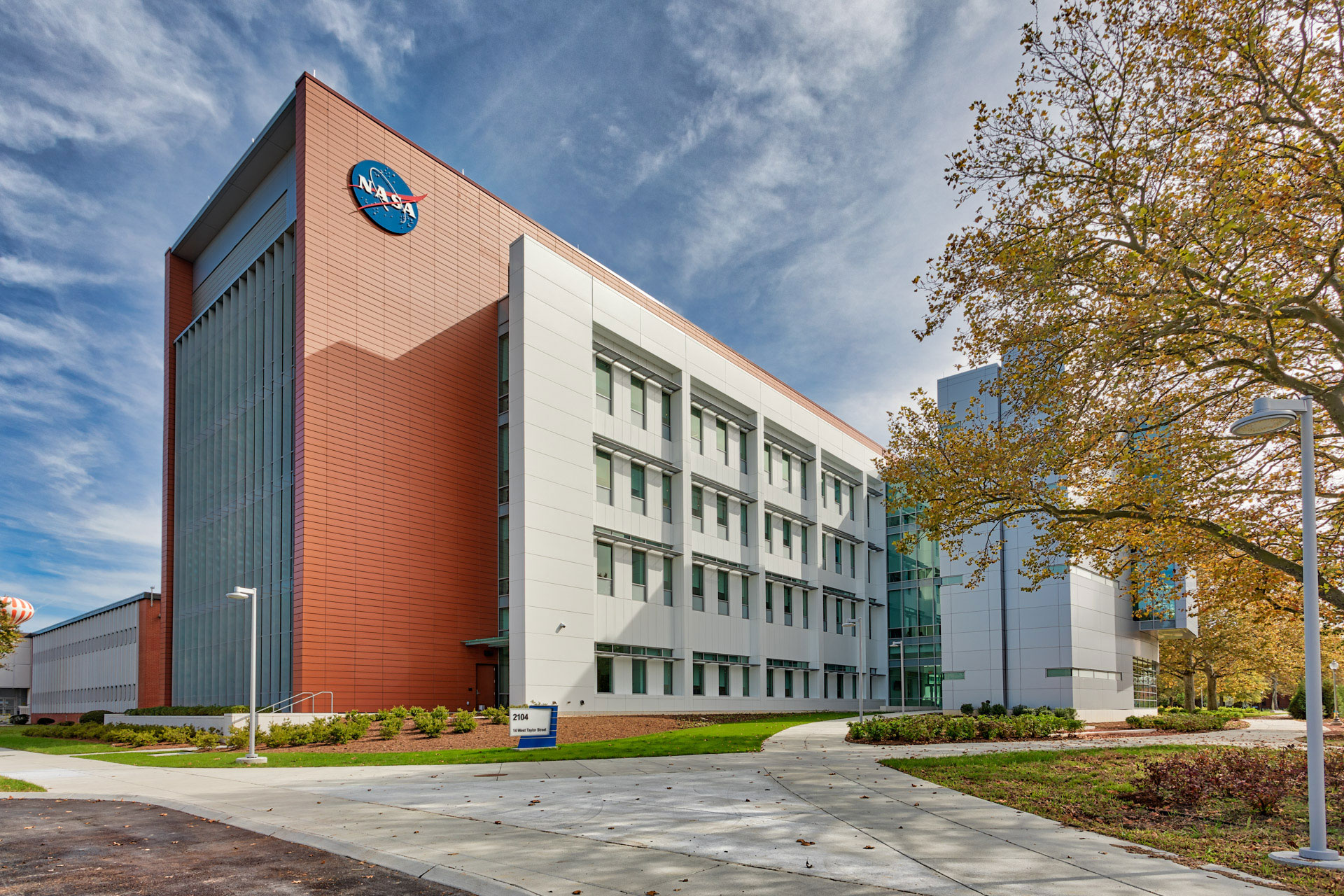Measurement Systems Laboratory at NASA Langley Features Impressive Multi-Material Façade
View Case Studies
Groundbreaking began on NASA Langley’s largest laboratory in April 2017. The nearly 96-million-dollar project in Hampton, Virginia is part of a revitalization plan for NASA Langley that will replace and repurpose the site’s facilities. “The Measurement Systems Laboratory will be a world-class facility for research and development of new measurement concepts, technologies, and systems that will enable NASA to achieve its mission in space exploration, science, and aeronautics,” Michael Finneran of NASA Langley Research Center explains.
With the collaborative efforts of AECOM, W.M Jordan, Hill International, and CEI Materials, the building hosts six NASA Research and Engineering groups over five distinct floors. The façade utilizes a variety of exterior cladding materials. In a modern take on municipal design, the building features terracotta as a warm replacement for traditional brick. The building also features single skin metal panels and metal louvers. Each element was fabricated by CEI Materials, who worked closely with the management team from conception to completion.
Another main component of the façade is the ALPOLIC aluminum composite material (ACM) in two distinct finishes, which offers modernity to this aeronautic building. The product was specified for its rigidity, light weight, and flat appearance. The ACM was fabricated utilizing CEI Materials’ R4000 Drained Rear-Ventilated Rainscreen Panel System.
Jason Sherrill, COO at CEI Materials describes, “CEI Materials’ approach to the NASA MSL building was simple. With the magnitude of a project this large we needed to start early and identify challenges to help the general contractor be successful, which in turn helped CEI be successful.”
Uniquely, the building is composed of structural concrete which required a majority of the cladding materials to be installed directly onto it. In order to achieve a flat, uniform appearance, the design required planning and adjustments to design and construct a lateral support system which allowed for external insulation.
Additionally, project panels had to be designed out around the knife blades that protruded to allow sunshades to be installed after the panels were in place. Sherrill further describes, “Prior to windows even being installed we were able to 3D scan and provide vital information at the beginning of the project regarding vertical alignment of wall planes, windows and column lines.”
CEI Materials used a variety of technologies in order provide design assist capabilities to the project’s team. In addition to 3D scanning, the team was responsible for numerous aspects of quality control to ensure the panels arrived optimally on site. And due to the project’s size, the team overcame a variety of challenges.
“On large complex façade scopes such as the NASA MSL building our team engages early to develop a strategic delivery schedule while reviewing other site considerations that should be planned for. In today’s rapid construction environment time and trade sequencing is critical for hitting the overall project deadline. As a modern fabricator we identify what items need to be in place for the 3D scan and if certain items cannot be completed we assist in additional options that keep the schedule in mind,” Sherrill explains.
The NASA Measurement Systems Laboratory is a testament to the importance of technological integration and will serve as a model for future site designs. Additionally, the project showcases that the use of multiple products can not only be achieved but offer versatility that speaks to the building’s purpose. The Measurement Systems Laboratory fully showcases the capabilities of CEI Materials and exemplifies how a modern fabricator can adapt to any circumstances from an architect’s vision.
For NASA, the building showcases their commitment to modernity and innovation. "This is going to advance and ensure the capabilities the agency must have for mission success, as well as pave the way for Langley's future as we enter our 100th year," said Dave Bowles, director of NASA Langley Research Center.
LOCATION
Hampton, VA, United States
BUILDING OWNER
NASA Langley Research Center, Hampton, Virginia
CONTRACTOR
W. M. Jordan, Newport News, VA
MANUFACTURER
CEI Materials, LLC
BUDGET
96,000,000
SIZE
175,000-square-feet
DATE COMPLETED
September, 2020
